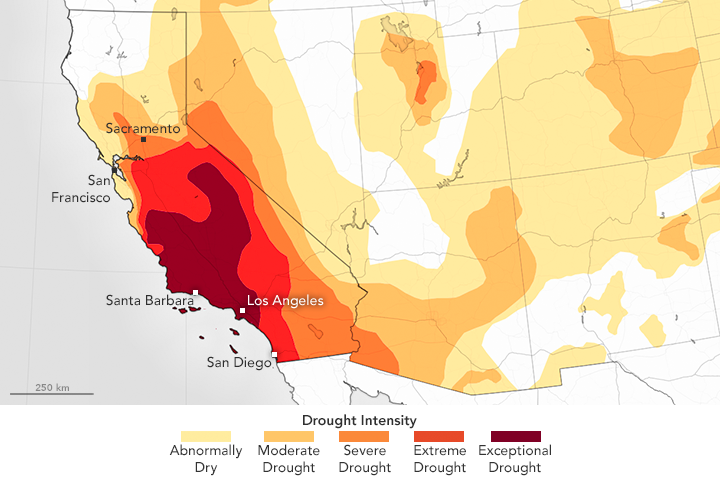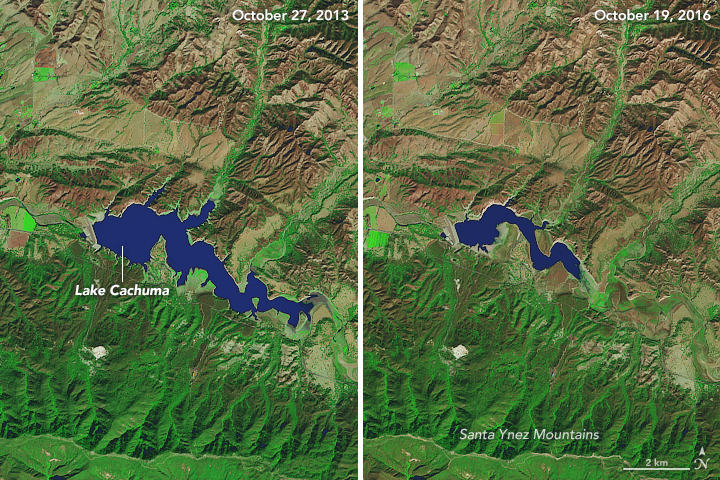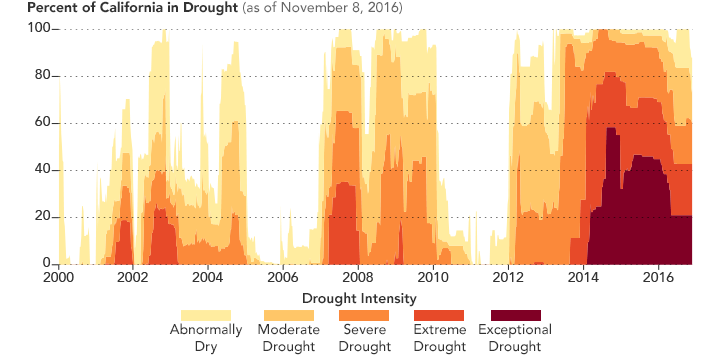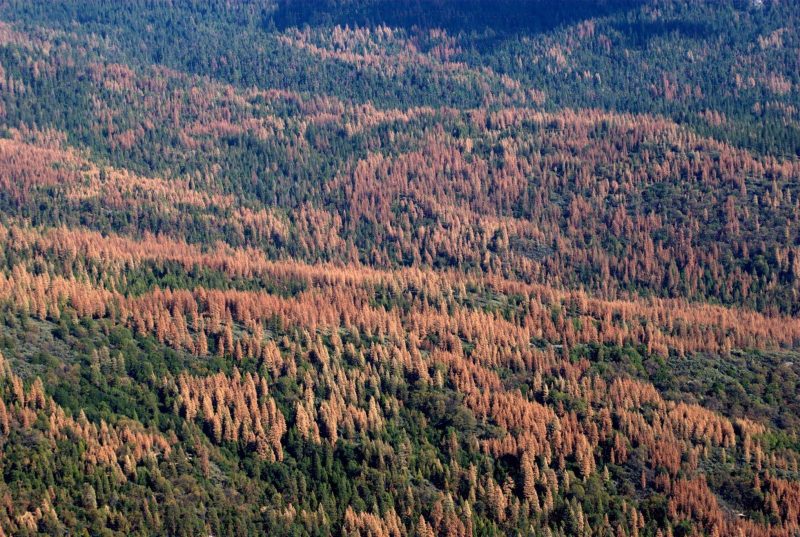
While late summer and autumn rains offered some relief to northern California, drought continues in the southern part of the state, said NASA’s Earth Observatory this week. Exceptional drought can bring widespread crop and pasture losses, as well as water emergencies due to low reservoirs, streams, and wells. Meanwhile, the U.S. Forest service said on November 18, 2016 that its latest aerial survey reveals more than 100 million trees dead in California.
The map at the top of this page depicts southern California’s ongoing drought according to the classification system of the U.S. Drought Monitor. NASA Earth Observatory said:
The map is based on measurements of soil, water, and climate conditions collected by federal, state, and local observers. NASA also provides experimental measurements and models to the drought monitoring effort.

While the extent and severity of drought has fluctuated over the months and years, the large zone of exceptional drought in southern California has persisted since January 2014. The chart below shows how extreme the current drought has been in comparison to past dry spells. NASA said:
While the state has experienced several dry periods since 2000, none pushed any portion of the state into exceptional drought. About 20 percent of California remains in exceptional drought now.
Read more from NASA’s Earth Observatory

Here’s more about the November 18 report from the U.S. Forest Service that California now has more than 100 million dead trees:
The U.S. Department of Agriculture (USDA) announced today that the U.S. Forest Service has identified an additional 36 million dead trees across California since its last aerial survey in May 2016. This brings the total number of dead trees since 2010 to over 102 million on 7.7 million acres of California’s drought stricken forests. In 2016 alone, 62 million trees have died, representing more than a 100 percent increase in dead trees across the state from 2015. Millions of additional trees are weakened and expected to die in the coming months and years.
This massive die-off of tree in California forests increases the risk of catastrophic wildfires and other threats to humans.
Read more from the U.S. Forest Service about California’s trees
New Aerial Survey Identifies More Than 100 Million Dead Trees in California: https://t.co/J0WPeRD1rl
— U.S. Forest Service (@forestservice) November 18, 2016

Bottom line: While dry spells are not uncommon in southern California, none since 2000 has pushed any portion of the state into exceptional drought. About 20 percent of California remains in exceptional drought now.











